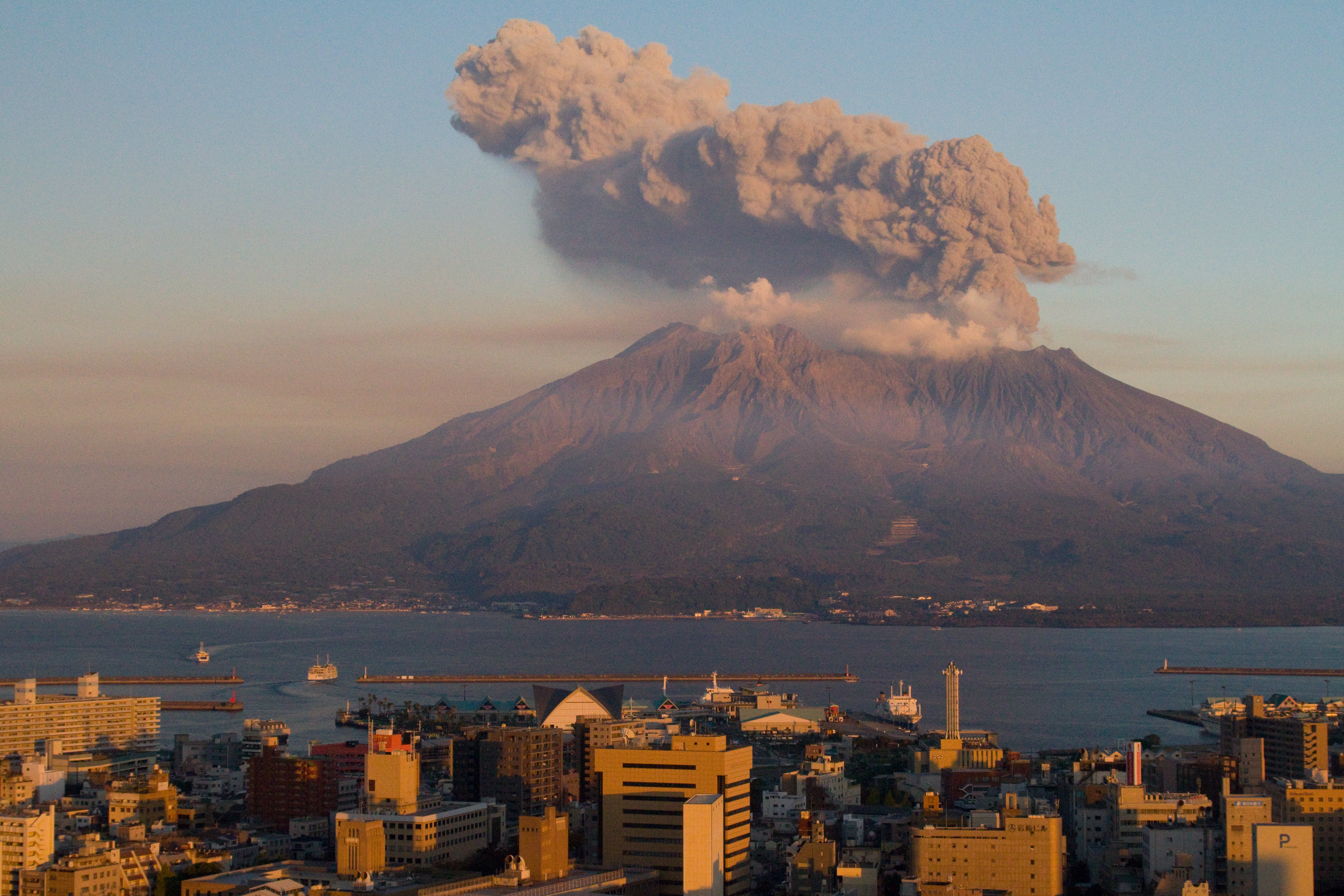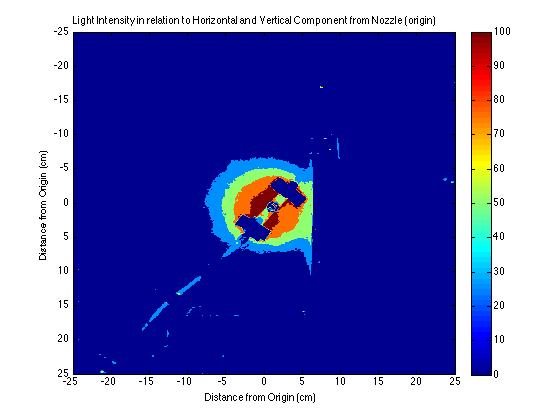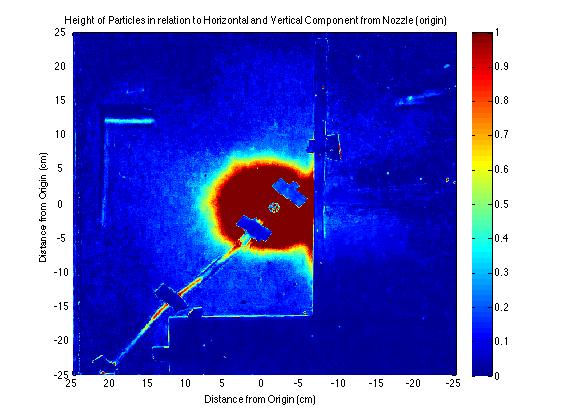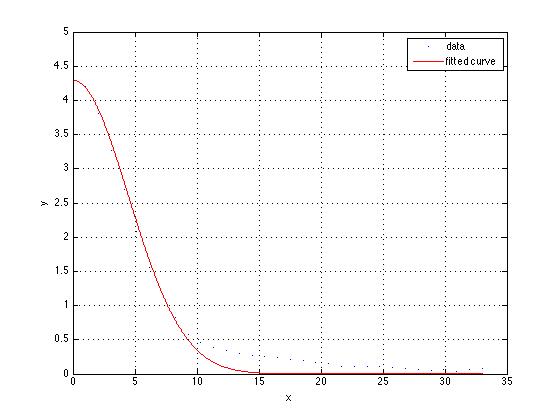
May - August 2014

|
|
Experiments and Research performed by Youn Sub Hong, Engineering Science, U. Toronto May - August 2014 |
Using a recently developed technique, the attenuation of light passing through the resulting settled particle mound is recorded and converted to a height measurement. Azimuthally averaged height values are plotted with respect to the radius and fit to a Gaussian distribution. MatLab is used to convert snapshots of the particle mound at the end of experiments and convert these to false-colourintensity plots (Figure 2.1). Using the light-attenuation method, this is converted to measure the height of the mound (Figure 2.2). Azimuthally averaging gives the height versus radius, which is fit to a Gaussian (Figure 2.3).

Figure 2.1: Light Intensity versus Radius Graph |

Figure 2.2: Height versus Radius Graph |

From this, the measured maximum heights and the standard deviations are expressed empirically as a function of the particle size and concentration, volume flux of the plume at the source and the ambient stratification. These results will be rescaled to predict the settled particle height distribution around a volcanic eruption site.

Figure 3: Table of Raw Data and Results |
Department of Earth and Atmospheric Sciences